In October 1957, Sputnik was launched by the Russians, but the US scientist in the then small town of Huntsville, Alabama were not far behind. {vintage film & pics}
Huntsville was a small town before space race
Huntsville was a small town with only 16,000 residents in the 1950s when it played a historic part in the ‘space race’ in the 1950s and 60s. The rapid growth of the arsenal and associated contractor establishments trebled the population in six years.”1
Here is a brief outline of the events that took place in the space race:
- Wernher von Braun was a German aerospace engineer and one of the leading figures in the development of rocket technology in Nazi Germany. Following WWII, he was moved to the United States with other scientists, technicians, and engineers where he developed the rockets that launched America’s first space satellite and first series of moon missions.
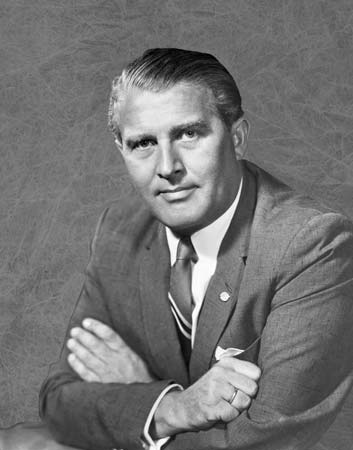 Wernher von Braun
Wernher von Braun
Von Braun’s Removal to America
Von Braun’s removal to America through a program named, Operation Paperclip, was quite dramatic as described by Wikipedia:
“In April, as the Allied forces advanced deeper into Germany, Kammler ordered the engineering team (Wernher von Braun’s team) to be moved by train into the town of Oberammergau in the Bavarian Alps where they were closely guarded by the SS with orders to execute the team if they were about to fall into enemy hands. However, von Braun managed to convince SS Major Kummer to order the dispersion of the group into nearby villages so that they would not be an easy target for U.S. bombers.
Von Braun and a large number of the engineering team subsequently made it to Austria. On May 2, 1945, upon finding an American private from the U.S. 44th Infantry Division, von Braun’s brother and fellow rocket engineer, Magnus, approached the soldier on a bicycle, calling out in broken English: “My name is Magnus von Braun. My brother invented the V-2. We want to surrender.” After the surrender, von Braun spoke to the press:
We knew that we had created a new means of warfare, and the question as to what nation, to what victorious nation we were willing to entrust this brainchild of ours was a moral decision more than anything else. We wanted to see the world spared another conflict such as Germany had just been through, and we felt that only by surrendering such a weapon to people who are guided by the Bible could such an assurance to the world be best secured.
 Operation Paperclip team at Fort Bliss
Operation Paperclip team at Fort Bliss
Fort Bliss – next – Huntsville
- On June 20, 1945, the U.S. Secretary of State approved the transfer of von Braun and his specialists to America. Finally, von Braun and his remaining staff were transferred to their new home at Fort Bliss, a large Army installation just north of El Paso. While there, they trained military, industrial, and university personnel in the intricacies of rockets and guided missiles. As part of the Hermes project, they helped refurbish, assemble, and launch a number of V-2s that had been shipped from Germany to the White Sands Proving Ground in New Mexico.
- In the early 1950s, about 1,000 personnel were transferred from Fort Bliss, Texas, to Redstone Arsenal to form the Ordnance Guided Missile Center (OGMC). Central to this was the German scientists and engineers led by Wernher von Braun that had originally been brought to America by Colonel Holger Toftoy.
- As the Korean War started, the OGMC was given the mission to develop what eventually became the Redstone Rocket. This rocket set the stage for America’s space program, as well as major Army missile programs, which was to be centered in Huntsville.
- Toftoy, then a brigadier general, commanded OGMC and the overall Redstone Arsenal.
- The new Army’s ballistic rocket was christened after the arsenal, the Redstone, in April 1952. Originally designated Hermes C., the Redstone was the first large liquid rocket developed in the US using German V-2 technology. It later launched the first US satellite and the first American astronaut into space.2 The rocket used a modified version of the power plant originally developed by the North American Aviation as a booster for the Navaho intercontinental cruise missile….The Redstone was the last American major rocket system based on alcohol as fuel. The improving engines would rely on kerosene and liquid oxygen as a propellant combination of choice in mid-1950s.
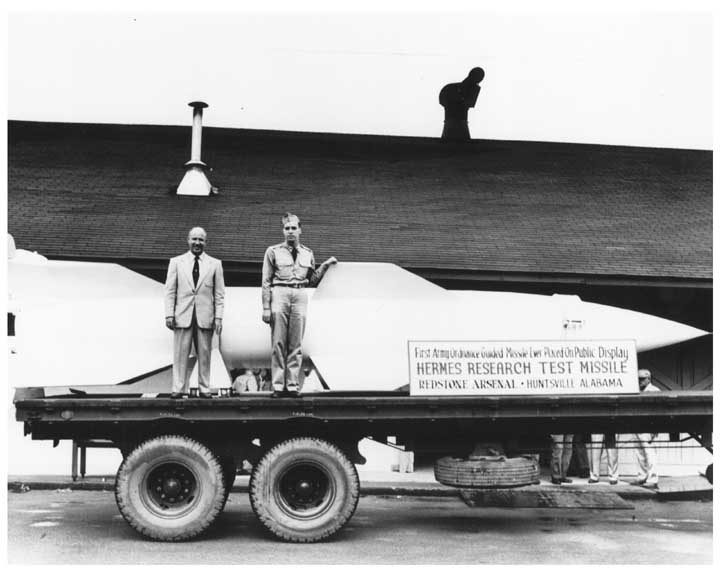 Hermes guided missile, May 1953 (Redstone Arsenal)
Hermes guided missile, May 1953 (Redstone Arsenal)
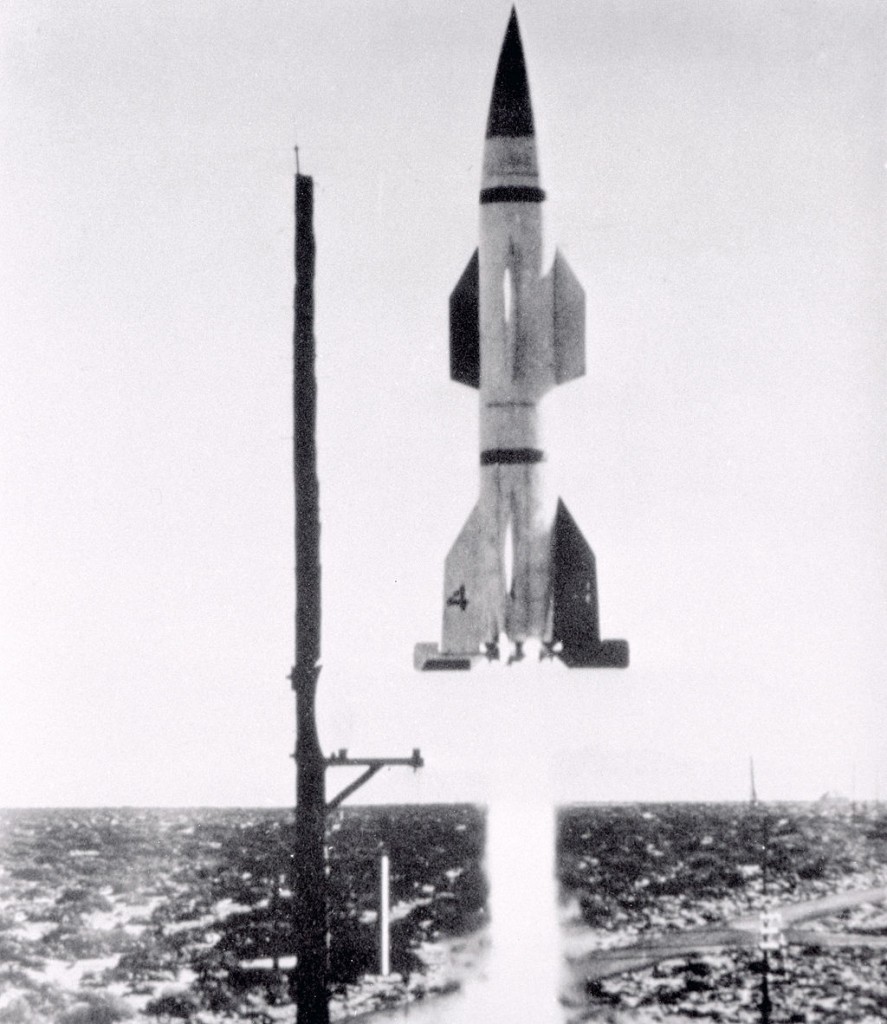 The first Hermes A-1 test rocket, fired at White Sands Proving Ground (Wikipedia)
The first Hermes A-1 test rocket, fired at White Sands Proving Ground (Wikipedia)
- During the 1950s, Werner von Braun enthusiastically promoted the possibilities of space flight in books and magazines. In 1955, he became a U.S. citizen. In early 1956, the Army Ballistic Missile Agency (ABMA) under Major General John Medaris was formed.
- When the USSR successfully launched Sputnik—the world’s first artificial satellite—in October 1957, von Braun’s team was not far behind with its launching of the first American satellite.
- President Eisenhower signed legislation establishing NASA in January 1958. On January 31, 1958, ABMA placed America’s first satellite, Explorer 1, into orbit using a Jupiter-Claunch vehicle, a descendant of the Redstone. This brought national attention to Redstone Arsenal and Huntsville, with widespread recognition of this being a major center for high technology and the city was nicknamed “The Rocket City” for its close association with U. S. space missions.
- In July of 1958, President Eisenhower signed legislation establishing NASA and on October 21, 1958, von Braun was formally transferred to the new agency. Von Braun, however, did not really go anywhere; NASA’s George C. Marshall Space Flight Center was built around von Braun’s headquarters in Huntsville. In 1960, he was named the Marshall Center’s first director.
- At Huntsville, von Braun oversaw construction of the large Saturn launch vehicles that kept the United States abreast of Soviet space achievements in the early and mid-1960s. In the late 1960s, von Braun’s genius came to the fore in the space race, and the Soviets failed in their efforts to build intricate booster rockets of the type that put the first U.S. astronauts into a lunar orbit in 1968. Von Braun’s Saturn rockets eventually took 27 Americans to the moon, 12 who walked on the lunar surface. Von Braun retired from NASA in 1972 and died five years later
- Many of the German Rocketeers fully integrated into American life and became naturalized citizens. Thirty-nine Redstone Arsenal’s German specialists were sworn as U. S. citizens on November 11, 1954, and 103 scientists, engineers, and members of their families were naturalized on April 14, 1955, and took the citizenship oath in a ceremony at Huntsville High School.
Vintage film of Huntsville, Alabama 1957
Sometimes we find some real gems on YouTube and this one was posted by The City Of Huntsville. It is a vintage film of Huntsville, Alabama in 1957 and brings back memories of the beginnings of “The Rocket City” This historic film includes vintage footage of the rocket that started the space program in the United States [vintage film and pics] Be sure to read the whole story of how Huntsville earned this nickname.
Watch for these scenes in the film:
- Jones Valley
- Old Highway 431
- Downtown
- Big Spring Partners Historic Hall
- Big Spring Park
- Tennessee River flood Adams Street Tree
- UA Huntsville
- Thornton Acres
- The eastern overlook from Monte Sano State Park
The film above was made in 1957 during this exciting time of growth in Huntsville, Alabama when Huntsville was earning the name “The Rocket City”. A historic marker in the film proudly states the words: “Hermes Guided Missile – First American-made guided missile was put on public display. The first showing was May 14, 1953, at Huntsville, home of the world’s largest rocket and guided missile research and development center, Redstone Arsenal.” This simple missile is the start of the space program in the United States.
The Hermes missile now stands at the southwest corner of Airport Road and Memorial Parkway in Huntsville, Alabama, a symbol of how and where the United States space program began.
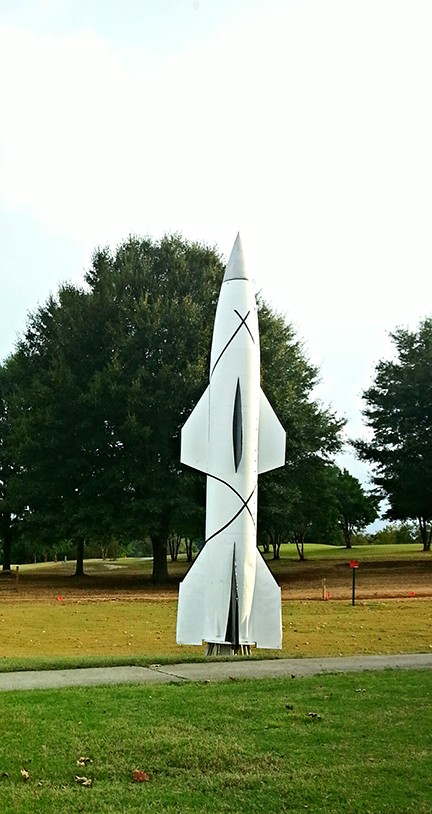 Hermes Guided Missile at Redstone Arsenal
Hermes Guided Missile at Redstone Arsenal
Discordance: The Cottinghams (Volume 1) – A novel inspired by the experiences of the Cottingham family who immigrated from the Eastern Shore of Virginia to Bibb County, Alabama
Filled with drama, suspense, humor, and romance, DISCORDANCE continues the family saga from the Tapestry of Love series with the children of Mary Dixon who married Thomas Cottingham.
Inspired by true events and the Cottingham family that resided in 17th century Somerset, Maryland and Delaware, colonial America comes alive with pirate attacks, religious discord, and governmental disagreements in the pre-Revolutionary War days of America.


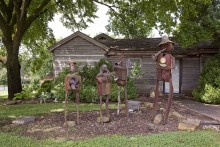
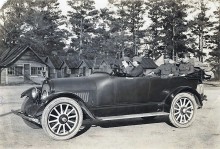
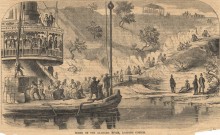
Clyneice Ledbetter
Lennis Ledbetter Sewell
What is the building at 3:12 in the video? It looks like the old State Bank in Decatur. But I assume this is in Huntsville.
It is the former State Bank building at Courthouse Square in Huntsville
If your looking for a quick but fun weekend trip with the kiddies, They will enjoy!!!!
Cuz you find the kewlest stuff..
Dale Boyd
Delightful read for a former U.S. Army, Marshall Space Flight Center, National Aeronautics and Space Administration employee. Working with the von Braun team was indeed a privilege. I was employed in June 1958; my husband in 1956. What a ride!!!
I bet you have some great stories about your experience.
Jim Davis
My hubby and my nephew were a part of those rocket men!!
60 years ago next year. Hard to believe.
Could have launched ahead of the Russians, but it was a Navy project so the Army was forbidden to orbit anything.
In assisting my grandson with a research paper in 2014, I learned about the Von Braun team’s choice of surrender: Russians or Americans. We also learned that Von Braun had been interested in rockets since childhood. Once he attached homemade firecrackers to a child’s wagon and set it afire and sent it down a hill. This was his first attempt at creating a “rocket.”